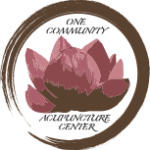
The meridian system is a phrase that comes up often during acupuncture treatment. Traditional Chinese medicine believes that energy (also referred to as qi) flows throughout the body much like blood does. When this flow of energy becomes disrupted, symptoms and disease can occur. Acupuncture and other forms of Eastern medicine work to restore the flow of energy throughout the body using the meridian system. continue reading
















